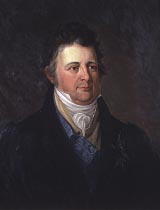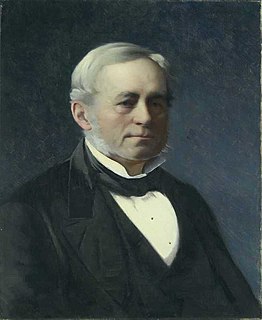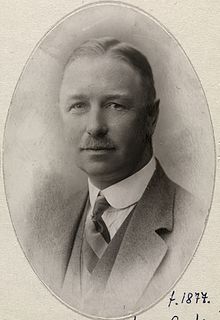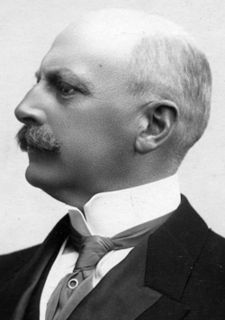
Bærums Verk is a village in Bærum in Akershus, Norway, with a population of about 8000. It is located on both sides of the river Lomma.

Jarlsberg was a former countship that forms a part of today's Vestfold county in Norway.
Aristocracy of Norway refers to modern and medieval aristocracy in Norway. Additionally, there have been economical, political, and military elites that—relating to the main lines of Norway's history—are generally accepted as nominal predecessors of the aforementioned. Since the 16th century, modern aristocracy is known as nobility.

Count Johan Caspar Herman Wedel Jarlsberg was a Norwegian statesman and nobleman. He played an active role in the constitutional assembly at Eidsvoll in 1814 and was the first native Norwegian to hold the post of Governor-general of Norway with the authority of a viceroy, representing the absent king of Norway as head of the Norwegian cabinet during the union with Sweden.

Yngvar Nielsen was a Norwegian historian, politician, geographer and pioneer of tourism in Norway.

The Count of Wedel-Jarlsberg is a title of the Norwegian nobility and of the Danish nobility. The family of Wedel-Jarlsberg is a branch of the larger family von Wedel, which comes from Pomerania, Germany. Family members have had a significant position in the 18th and 19th centuries' Norwegian history.

Wilhelm Christian Wedel-Jarlsberg was a Norwegian nobleman and papal chamberlain.

Otto Joachim Løvenskiold was a Norwegian judge and politician. He served three terms in the Parliament of Norway, and served as Mayor of Kristiania from 1869 and 1876. He was a Supreme Court Justice from 1854 to his death. By birth he is member of Løvenskiold noble family.

Bogstad Manor is a historic Manor House and former estate located in the borough of Vestre Aker in Oslo, Norway. It is situated in the northwestern part of Oslo.
Peter Martin Anker was a Norwegian diplomat. He worked for the League of Nations, Red Cross and United Nations before, during and after the Second World War. He was then an ambassador in European, Asian and African countries from 1951 to 1973. He was stationed in six countries, but with side responsibilities for other countries, he was an ambassador in fifteen countries during his career.

Westye Parr Egeberg was a Norwegian military officer, businessperson and politician for the Conservative Party.

Einar Westye Egeberg Sr. was a Norwegian businessperson and politician for the Conservative Party.

Baron Frederik (Fritz) Hartvig Herman Wedel Jarlsberg was a Norwegian aristocrat, jurist and diplomat.

Ole Paus was a Norwegian iron and steel industrialist and Chairman of the commercial bank Den norske Creditbank. He was a first cousin of Henrik Ibsen.

Christiane Andrea "Karen" Wedel-Jarlsberg, was a Norwegian countess and lady in waiting.

Esviken is a villa surrounded by an elaborate garden. It is located on a former farm on Leangbukta bay between Vettre and Konglungen in Asker, Norway.
Peder Nicolas Paus is a Norwegian banker and investor in the petroleum industry. He is a co-founder and former chairman of the international oil and gas exploration company Questerre Energy Corporation.

Schou is a Norwegian family of Danish origin. Christian Julius Schou became owner of the Schou Brewery, which was owned by the family from 1821 to 1898. His son Halvor Schou became a leading industrialist and established Hjula Væverier, Norway's largest industrial company at the time. He also inherited the Schou Brewery, which had around thousand employees at that point in 1874. In 1855, he bought the Sinsen farm, and in the 1860s also the Løkenes farm in Aker, where he built the Esviken mansion, designed by Wilhelm von Hanno. His daughter Birgitte Halvordine Schou was married to the industrialist Einar Westye Egeberg, and their daughter Hermine (1881–1974) married Peder Anker Wedel-Jarlsberg.

Per Christian Cornelius Paus was a Norwegian steel industrialist and lawyer.

Jarlsberg Manor is a manor three kilometres northwest of the centre of the town of Tønsberg in Vestfold og Telemark, Norway. It has traditionally been the residence of members of the Wedel-Jarlsberg family.

















